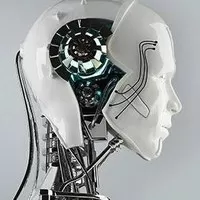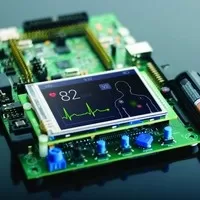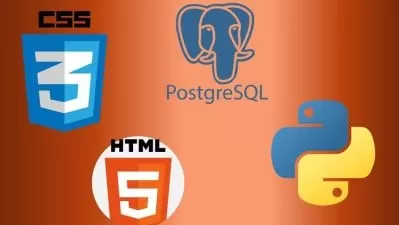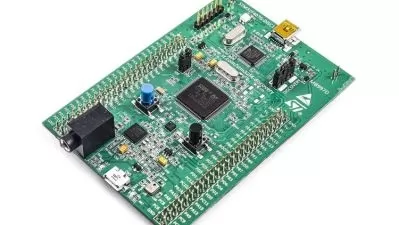Embedded MicroPython from Ground Up™
Israel Gbati,BHM Engineering Academy
7:30:35
Description
Develop Embedded Drivers and Firmware using the Python Programming Language
What You'll Learn?
- Develop Embedded Drivers and Firmware using the Python Programming Language
- Mix Python with C/C++
- Develop General Purpose Input/Output (GPIO)Drivers
- Develop Power Management Drivers
- Develop General Purpose Timer Drivers
- Develop Timer Output Compare Drivers
- Developer Timer Input Capture Drivers
- Develop PWM Timer Drivers
- Develop RealTime Clock (RTC) Drivers
- Develop Watchdog Timer (WDG) Drivers
- Develop Analog-to-Digital Converter(ADC) Drivers
- Develop Analog-to-Digital Converter (ADC) Time Triggered Drivers
- Develop Digital-to-Analog Converter (DAC) Drivers
- Develop Universal Asynchronous Receiver/Transmitter (UART) Drivers
- Develop Serial Peripheral Interface (SPI) Drivers
- Develop Inter -Integrated Circuit (I2C) Drivers
Who is this for?
More details
DescriptionWhether you are new to Python programming or not you need to take a look at this course as an embedded developer.
Do you want to know how to write clean and efficient embedded drivers for stm32 microcontrollers using the python programming language?
If so, then welcome to Embedded MicroPython from Ground Upâ„¢
MicroPython is an efficient implementation of Python3 optimised to run on microcontrollers.
Now, why should you ....
Learn MicroPython as an embedded systems developer?
The simplicity of the python programming language makes micropython very easy to learn.
It is very easy to use, and allows you to develop complex firmware and drivers in python with few lines of code
It has an extensive software library which you can import into your project to build very complex solutions. E.g. network socket programming.
It is extensible with C/C++ and assembly, so you can mix assembly and c with micropython to improve code efficiency or simply implement routines that you are more comfortable implementing in low-level code.
So with that understood, let me tell you…
                                   Exactly What You’re Getting
This course can be divided into 3 major sections.
                                          First Section
The first section provides practical python essential training for embedded developers. This section is for developers who are not familiar with the python programming language and those who want to brush up on their python development skills. This is required because we need to know who to write python code before we can develop our firmware and drivers in python.
                                         Second Section
The second section deals peripheral driver development. Over here we shall develop drivers for all the standard peripherals of our STM32 microconctoller.
We shall develop the following drivers:
General Purpose Input/Output (GPIO)Drivers
Power Management Drivers
General Purpose Timer Drivers
Timer Output Compare Driver
Timer Input Capture Driver
PWM Timer Driver
RealTime Clock (RTC) Drivers
A Watchdog Timer (WDG) Drivers
Analog-to-Digital Converter(ADC) Drivers
Analog-to-Digital Converter (ADC) Time Triggered Drivers
Digital-to-Analog Converter (DAC) Drivers
Universal Asynchronous Receiver/Transmitter (UART) Drivers
Serial Peripheral Interface (SPI) Drivers
Inter -Integrated Circuit (I2C) Drivers​
                                  Last Section
In the final section we shall develop firmware for addressing advanced topics such as:
Adding Assembly Language Code to MicroPython
Adding C Language Code to MicroPython
Please take a look at the full course curriculum. I hope to see you in the course.
Who this course is for:
- If you are an absolute beginner to embedded systems, then take this course.
- If you are an experienced embedded developer and want to learn how to professionally develop embedded applications for ARM processors, then take this course.
Whether you are new to Python programming or not you need to take a look at this course as an embedded developer.
Do you want to know how to write clean and efficient embedded drivers for stm32 microcontrollers using the python programming language?
If so, then welcome to Embedded MicroPython from Ground Upâ„¢
MicroPython is an efficient implementation of Python3 optimised to run on microcontrollers.
Now, why should you ....
Learn MicroPython as an embedded systems developer?
The simplicity of the python programming language makes micropython very easy to learn.
It is very easy to use, and allows you to develop complex firmware and drivers in python with few lines of code
It has an extensive software library which you can import into your project to build very complex solutions. E.g. network socket programming.
It is extensible with C/C++ and assembly, so you can mix assembly and c with micropython to improve code efficiency or simply implement routines that you are more comfortable implementing in low-level code.
So with that understood, let me tell you…
                                   Exactly What You’re Getting
This course can be divided into 3 major sections.
                                          First Section
The first section provides practical python essential training for embedded developers. This section is for developers who are not familiar with the python programming language and those who want to brush up on their python development skills. This is required because we need to know who to write python code before we can develop our firmware and drivers in python.
                                         Second Section
The second section deals peripheral driver development. Over here we shall develop drivers for all the standard peripherals of our STM32 microconctoller.
We shall develop the following drivers:
General Purpose Input/Output (GPIO)Drivers
Power Management Drivers
General Purpose Timer Drivers
Timer Output Compare Driver
Timer Input Capture Driver
PWM Timer Driver
RealTime Clock (RTC) Drivers
A Watchdog Timer (WDG) Drivers
Analog-to-Digital Converter(ADC) Drivers
Analog-to-Digital Converter (ADC) Time Triggered Drivers
Digital-to-Analog Converter (DAC) Drivers
Universal Asynchronous Receiver/Transmitter (UART) Drivers
Serial Peripheral Interface (SPI) Drivers
Inter -Integrated Circuit (I2C) Drivers​
                                  Last Section
In the final section we shall develop firmware for addressing advanced topics such as:
Adding Assembly Language Code to MicroPython
Adding C Language Code to MicroPython
Please take a look at the full course curriculum. I hope to see you in the course.
Who this course is for:
- If you are an absolute beginner to embedded systems, then take this course.
- If you are an experienced embedded developer and want to learn how to professionally develop embedded applications for ARM processors, then take this course.
User Reviews
Rating
Israel Gbati
Instructor's CoursesBHM Engineering Academy
Instructor's Courses
Udemy
View courses Udemy- language english
- Training sessions 53
- duration 7:30:35
- Release Date 2023/03/30

















